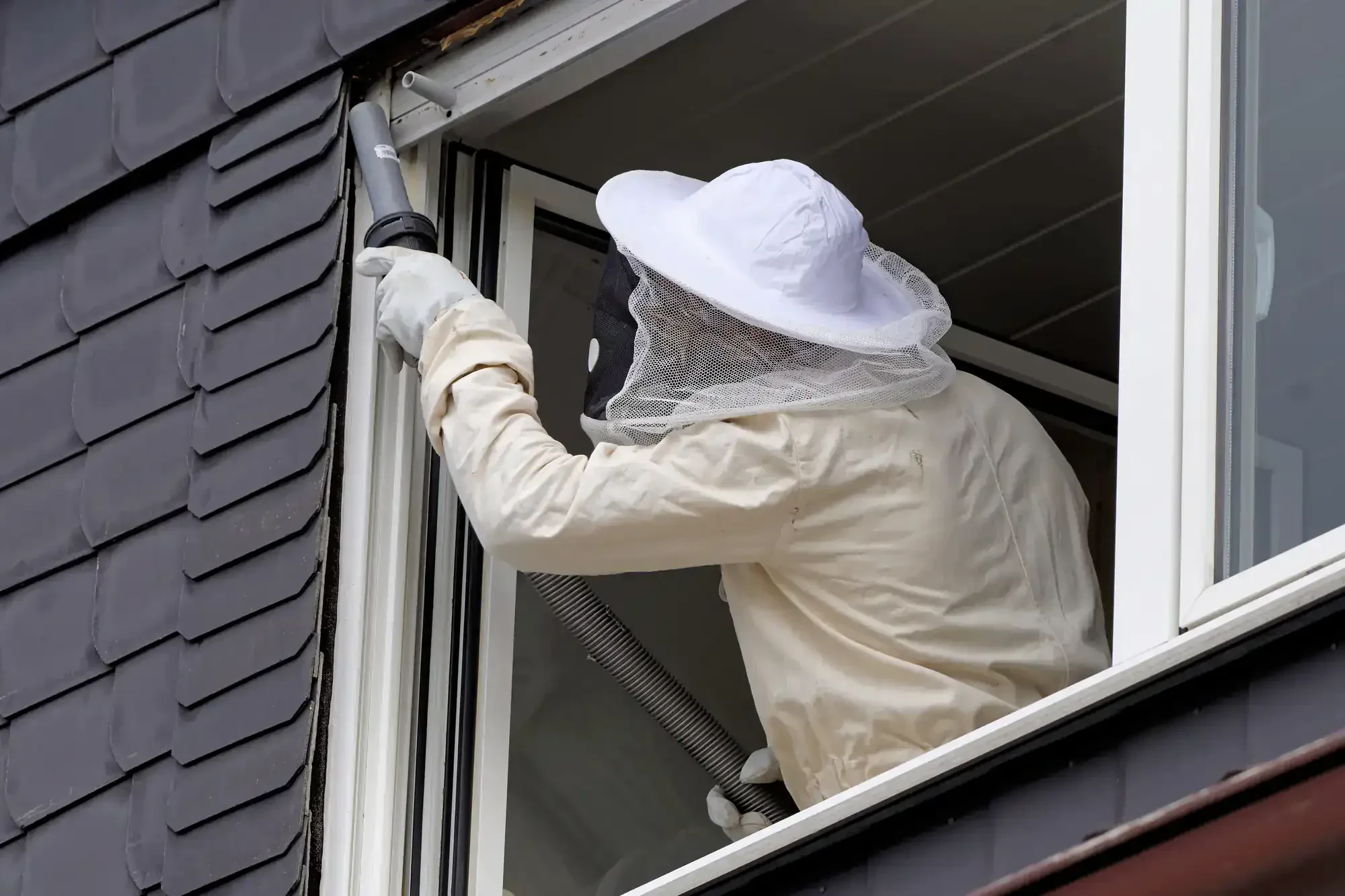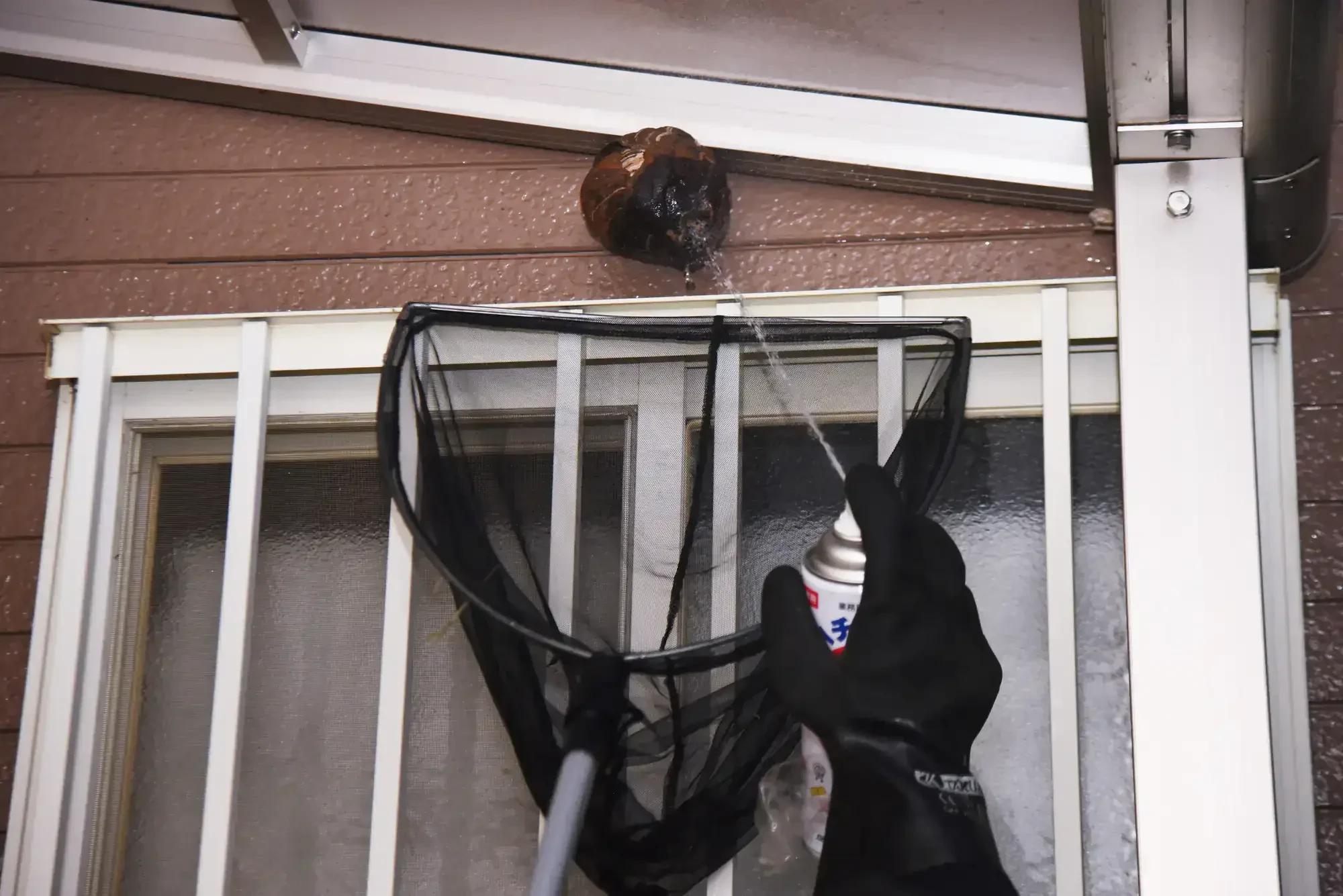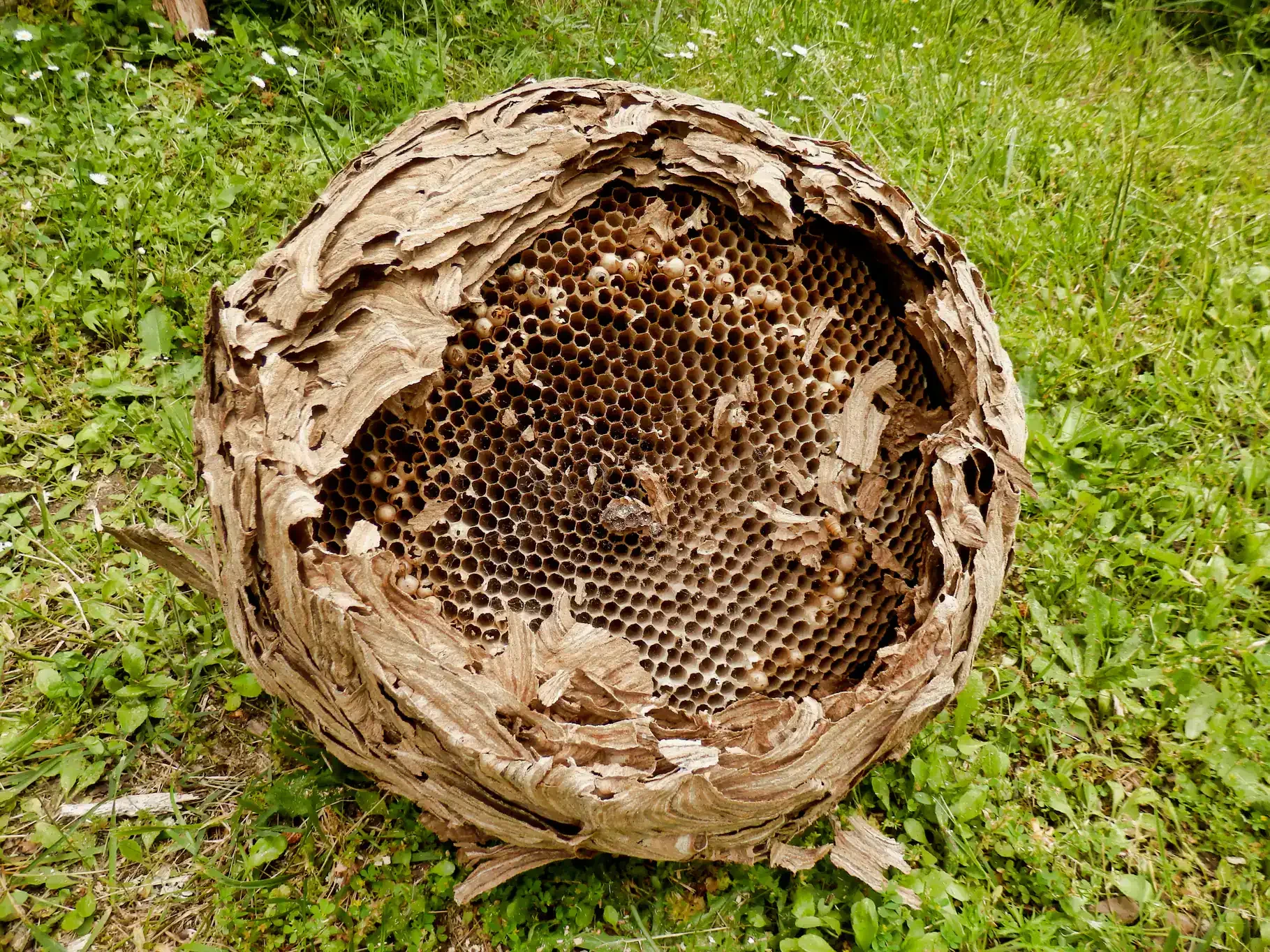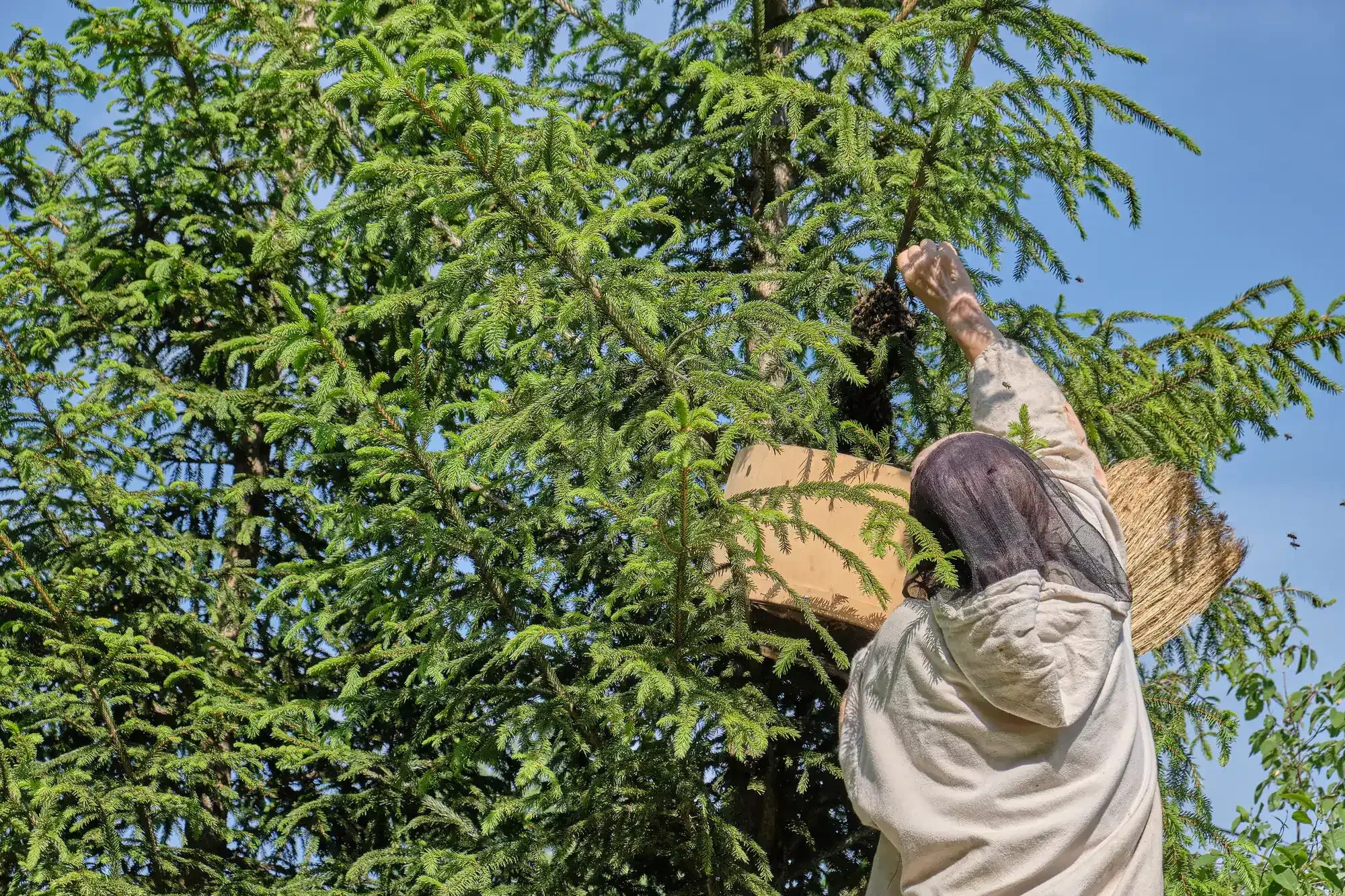
Hear from Our Customers

You get your yard back. No more canceling outdoor gatherings because of aggressive yellowjackets. No more keeping kids inside because there’s a hornet nest under your deck.
When we eliminate wasp nests from your Argentine property, you’re not just getting rid of the immediate threat. You’re getting complete peace of mind that your family can safely use their own outdoor spaces again.
Our treatments target the entire colony and seal entry points to prevent new nests from forming in the same locations year after year.
We’ve been serving Argentine and the surrounding Michigan communities since 2005. We’re the local family-owned business that understands exactly what you’re dealing with when wasps move onto your property.
Roger brings 26 years of hands-on experience to every job. Unlike the big chains that send different technicians every time, you get the same expert who learns your property and adjusts treatments based on what works best for your specific situation.
We’ve earned our 4.7-star rating from over 363 customers by solving problems completely the first time, not just providing temporary fixes that leave you calling someone else in a few weeks.

First, we conduct a thorough inspection of your entire property. Most people only see the obvious nest, but we check under eaves, around deck railings, in landscaping materials, and those underground yellowjacket colonies that are nearly impossible to spot until someone gets stung.
Next, we apply targeted treatments directly to each nesting site. We use professional-grade materials and specialized equipment that penetrate the colony structure and eliminate wasps at the source. This isn’t a spray-and-hope approach.
Finally, we remove accessible nests and apply dust treatments to void areas where wasps might try to rebuild. We also seal cracks and entry points to prevent future infestations in the same locations.
The entire process typically takes 30-45 minutes, and you can safely use your property the same day once treatments dry.

Ready to get started?
Your wasp nest removal service includes complete property inspection, treatment of all active nests up to 20 feet high, dust application to prevent rebuilding, and sealing of entry points where possible.
Michigan presents unique challenges for wasp control. We have twelve different types of yellowjackets here, each with different nesting behaviors. Some build underground in abandoned burrows, others prefer wall voids or wooden structures. Our abundant wetlands and wooded areas around Argentine create ideal conditions for multiple species.
You also get our 90-day service guarantee. If wasps return to treated areas within that timeframe, we come back at no additional charge. This isn’t just about eliminating the current problem – it’s about keeping your property protected through the entire season.
We handle everything from paper wasps under your eaves to aggressive ground hornets that can swarm when disturbed. Each situation gets treated with the specific approach that works best for that species and location.

We typically respond within 24 hours for wasp nest removal in Argentine, and often the same day for emergency situations. If you discover wasps inside your home or find an active nest near high-traffic areas, we prioritize these calls.
The actual removal process takes 30-45 minutes depending on the number of nests and their locations. You can safely use your property the same day once our treatments dry, which usually takes about an hour.
For the first 24-48 hours after treatment, you may see some foraging wasps returning to where their nest used to be. This is normal – they’re confused and looking for their colony. Stay away from the treated area during this time, and the remaining wasps will disperse or die from contact with our residual treatment.
We handle all twelve types of yellowjackets found in Michigan, plus paper wasps, bald-faced hornets, and mud daubers. Each species requires a different approach because they nest in different locations and have varying levels of aggression.
Yellowjackets are typically the most dangerous because they’re extremely aggressive when their nest is disturbed and can sting multiple times. They often build underground nests that are hard to spot until someone steps on them while mowing or gardening.
Paper wasps build the visible paper-like nests you see hanging under eaves or deck railings. Bald-faced hornets create large, enclosed nests in trees or bushes. Mud daubers build smaller tube-like structures attached to walls or other surfaces. We have the specialized equipment and experience to safely eliminate all of these species without putting your family at risk.
Yes, once our treatments dry – which takes about 30-45 minutes – the treated areas are safe for pets and children. We use EPA-registered products specifically approved for residential applications around families.
During the actual treatment, we ask that people and pets stay inside as a precaution. This isn’t because the products are dangerous, but because it’s best practice to avoid any exposure during application.
Many of our customers have been using our services for years with dogs, cats, and young children without any issues. We’re always happy to discuss the specific products we use and provide safety data sheets if you want to review the technical details. The bigger safety concern is leaving active wasp nests untreated, especially with species like yellowjackets that can cause serious medical emergencies if someone with allergies gets stung.
Wasp nests contain far more insects than most people realize – sometimes thousands – and disturbing them without proper equipment and experience almost always results in multiple stings. Unlike bees, wasps can sting repeatedly and don’t lose their stinger.
DIY sprays from hardware stores are designed for immediate knockdown of individual wasps, not complete nest elimination. You might kill some wasps, but the remaining colony becomes extremely aggressive and often relocates to an even more problematic area of your property.
Yellowjackets are particularly dangerous because they can carry bacteria on their stingers that causes blood poisoning in sting victims. Ground nests are nearly impossible to treat effectively without professional equipment because you can’t see the full extent of the colony underground. The most common result of DIY wasp nest removal is getting stung multiple times and still having an active nest that needs professional treatment anyway.
Yes, we provide a 90-day guarantee on all wasp nest treatments. If wasps return to the same treated areas within that timeframe, we come back at no additional charge to retreat the problem areas.
This guarantee covers the specific nests we treated, not new colonies that might form in different areas of your property. However, our treatments also include preventative applications to likely nesting sites and sealing of entry points to reduce the chances of new infestations.
Most of our customers don’t need callback service because we’re thorough in our initial treatment. We don’t just spray the visible nest – we inspect your entire property, treat all active colonies we find, and apply dust to void areas where wasps commonly try to rebuild. The goal is complete elimination the first time, not repeat visits that cost you more money.
Yellowjackets and hornets are actually types of wasps, but they have different behaviors and nesting patterns that require specific treatment approaches. Understanding the difference helps us eliminate them more effectively.
Yellowjackets are the most aggressive and dangerous species we deal with in Michigan. They’re smaller, have bright yellow and black markings, and often build underground nests or nest inside wall voids. They’re scavengers that are attracted to food and garbage, which is why they’re often problems around outdoor dining areas.
Hornets are larger wasps that build enclosed, paper-like nests in trees or bushes. Bald-faced hornets are the most common type here and are less aggressive than yellowjackets unless their nest is directly threatened. Paper wasps build open, umbrella-shaped nests and are generally the least aggressive of the three, but they’ll still sting if they feel threatened.